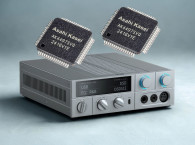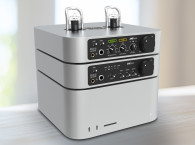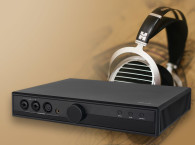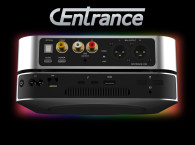Following its first presentation at CES 2015, Pass Labs has now confirmed availability for its highly anticipated new headphone amplifier. The HPA-1 is able to drive headphones presenting loads from 15 to 600 Ohms. It features a custom shielded toroidal power transformer feeding a discreet low noise regulated power supply, J-Fet input stages and Class A-biased direct-coupled MOSFET output stages.
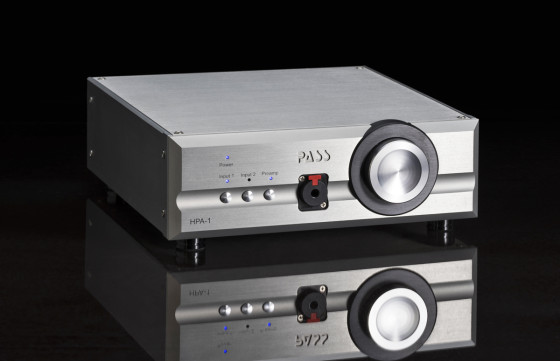
Since 1991, the name Pass Laboratories has been synonymous with innovative leadership in amplifier circuit design, so it comes as little surprise that what distinguishes Pass Labs’ new HPA-1 Headphone Amplifier from countless contenders is that the HPA-1 was designed on a “clean sheet of paper” as though it were to be used as a power amplifier.
Pass Laboratories, was founded in 1991 by legendary audio designer Nelson Pass to market its unique amplifiers and preamplifiers. The company is based in Auburn, California, and its critically acclaimed Aleph, X and XA-Series amplifiers have won numerous awards. Nelson Pass holds numerous audio patents and his achievements include developing the first dynamically biased Class-A amplifier circuit, developing a fully cascode audio power amplifier, and developing the Stasis amplifier in 1977. He helped popularize solid-state, single-ended Class-A power amplifiers, and developed the very successful Aleph series of products, and the Super-Symmetry circuit, which achieves exceptionally low distortion and noise levels.
Operating out of his shop at home, Pass developed numerous amplifier designs. Its first product, the Aleph 0, shipped in 1992 and it was a mono-block design rated at 70 watts into 8 ohms, unique in using three gain stages of power Mosfets including a push-pull output stage biased by a big constant current source. The amplifier was highly acclaimed and Nelson hired his next-door neighbor, Elena Tong, to help with producing the amplifiers. She still manages much of the company to this day. A stereo version called the Aleph 0s followed, along with a preamp called the Aleph P. A larger version of the Aleph 0 called the Aleph 1 shipped the following year, and was a mono-block rated at 150 watts.
In 1994 Nelson was joined by Wayne Colburn, who began working on improved version of the preamp and on a new phono stage. In 1995 Joseph Sammut left his position at Krell and became operations chief at Pass labs. The following year he was followed by designer Desmond Harrington. In 1997 Wayne Colburn’s efforts bore fruit in the revised Aleph P, the Aleph Ono phono stage, and the D1 digital to analog converter. By 1995 the company had outgrown Nelson’s buildings and in 1997 Pass Labs moved out of Nelson’s shop space and into a new facility in Foresthill. By then, even more space was needed, and was leased for storage elsewhere. Nelson’s original shop continues to house research.
In 2007, Desmond Harrington assumed responsibility as President of the company. Nelson and Wayne continue development work, Joe manages sales and marketing, and Elena and Kent English manage the rest of the company, and sit in the same office everyday.
Pass Labs’ designers knew that in order to stand out from the crowd, and satisfy their demanding customer base, the HPA-1 had to establish higher standards for audio performance. That has been accomplished by the conceptual approach of designing the HPA-1 as a real Class-A power amplifier, without compromising on circuit design and execution.
The project’s engineering foundation starts with a custom, low-noise shielded toroidal power transformer feeding a discreet low noise regulated power supply for the audio circuits. The importance of the power supply is often overlooked and plays a large part in overall performance of the amplifier. The HPA-1’s amplifier circuits are low-feedback, wide-bandwidth discreet designs employing J-Fet input stages and Class A-biased direct-coupled MOSFET output stages. The HPA-1 easily drives headphones presenting loads from 15 to 600 Ohms, particularly excelling on planar headphone designs.
The HPA-1 has a single high-quality headphone jack on its front panel, two sets of single-ended analog inputs via RCA jacks on the rear panel, and also a set of switchable “Preamp” line-level output jacks on the rear panel. There are no compromises with the HPA-1 when used as a stereo preamp and it will compete against contemporary preamplifiers. The rear panel holds the power switch and fuse. Volume control is via a hefty rotary knob connected to an ALPS Potentiometer. The other front-panel controls are three pushbuttons, to select inputs or to engage the Preamp output.
The substantial casework is the customary and well-recognized brushed aluminum shared with other Pass Laboratories products. The HPA-1 is available now at US MSRP $3,500.
passlabs.com



